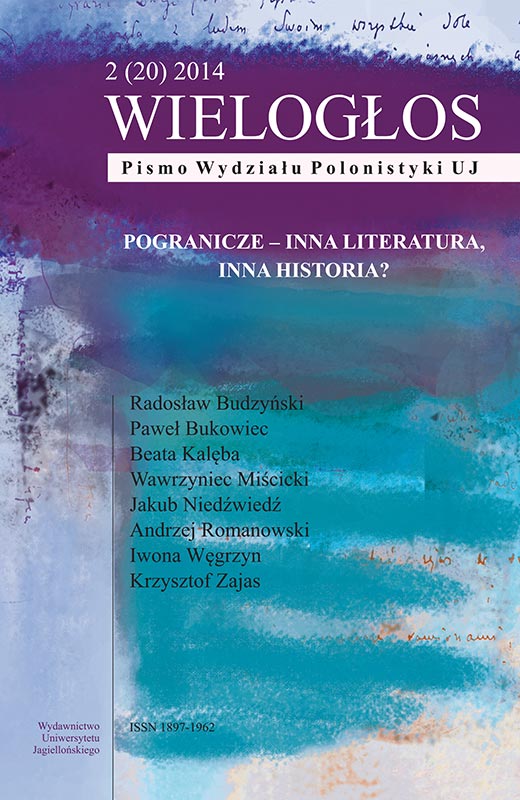Wielopiśmienność Wielkiego Księstwa Litewskiego: nowe perspektywy badawcze
Multi-Literacy in the Grand Duchy of Lithuania: A New Research Approach
Author(s): Jakub Niedźwiedź Subject(s): History, Middle Ages, Modern Age, 15th Century, 16th Century, 17th Century
Published by: Wydawnictwo Uniwersytetu Jagiellońskiego
Keywords: kultura pogranicza; Wielkie Księstwo Litewskie; historia czytania i pisania; literatura wczesnonowożytna; literatura staropolska; literatura starobiałoruska; wczesnonowożytna literatura muzułmańska na
Summary/Abstract: The paper deals with the problem of using different languages of writing in the Grand Duchy of Lithuania in the 15th–17th centuries. Among them there were: Latin, Polish, Ruthenian, Church-Slavonic, Lithuanian, German, Yiddish, Hebrew, Arabic and Greek, written in five alphabets: Latin, Cyryllic, Hebrew, Arabic and Greek. The author noticed that this multi-lingualism and multi-alphabeticism was omitted in Polish studies about history of literature of the Polish-Lithuanian Commonwealth. He argues that including these two issues in the studies on the Commonwealth’s history is crucial to better understand the muli-cultural and multi-ethnic character of this country. One of the main questions of the paper is about the relationship between a script and an identity. The author notices that comparative approach can be especially productive in such research. He enlists similar borderline processes in use of writing in medieval and early modern England, Sicily, Malta, Cyprus, Venice, Dubrovnik, Moldova and Andalusia. It is illustrated by a few cases of use of the Cyryllic, Latin and Arabic alphabets. The author draws a comparison between the 16th-century literary languages of Spanish Moriscos and Lithuanian Tatars. Both these languages were based on the written version of a vernacular language (Romance and Byelorussian) in the Arabic alphabet.
Journal: Wielogłos
- Issue Year: 2014
- Issue No: 20
- Page Range: 11-21
- Page Count: 11
- Language: Polish

